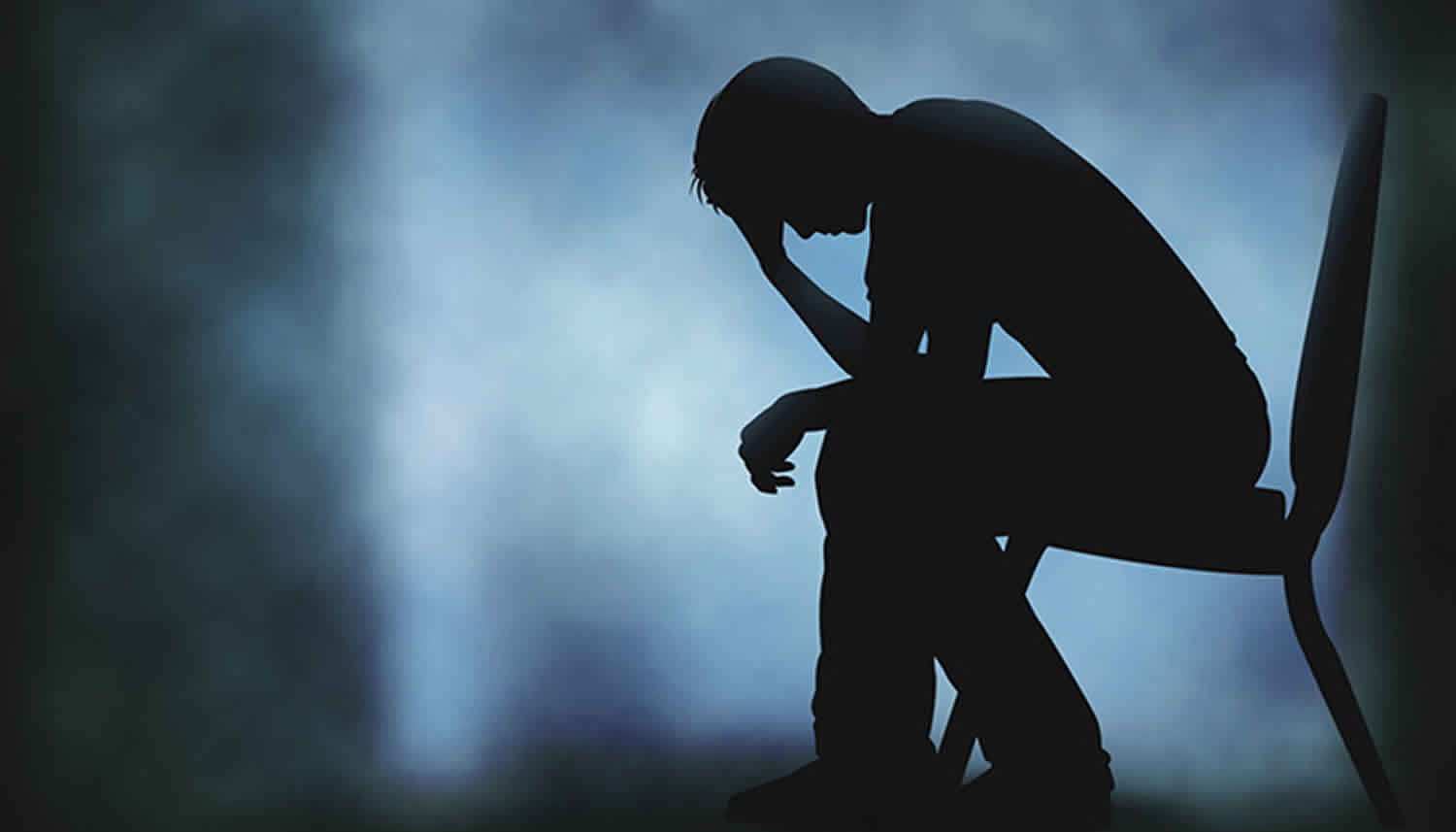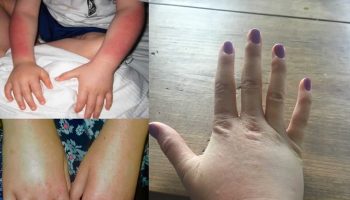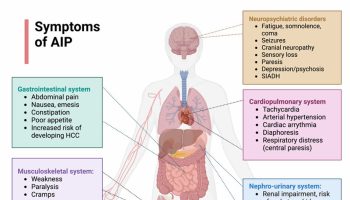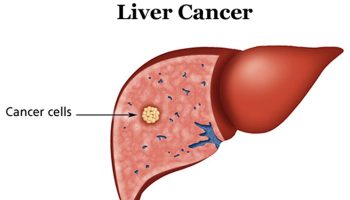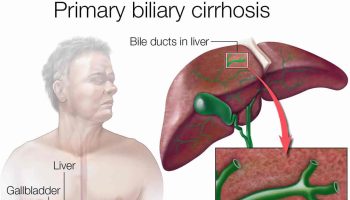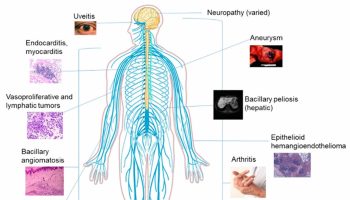Psychotic depression
Psychotic depression is a severe depression with psychotic features (i.e. delusions and/or hallucinations) in the context of a (unipolar) major depressive disorder 1. Psychotic depression or major depressive disorder with psychotic features is a serious illness during which a person suffers from the combination of depressed mood and psychosis, with the psychosis commonly manifesting itself as nihilistic type delusions, with the belief that bad things are about to happen 2. This can involve hallucinations (seeing or hearing things that aren’t there) or delusions (false beliefs that aren’t shared by others), such as believing they are bad or evil, or that they’re being watched or followed. They can also be paranoid, feeling as though everyone is against them or that they are the cause of illness or bad events occurring around them. Unfortunately, until recently, the treatment of psychotic depression has not been studied to the same extent as other psychiatric disorders with similar prevalence 3 and remains an underdiagnosed 4 and undertreated psychiatric disorder 5.
There has been a long-standing discussion as to whether psychotic depression is a distinct syndrome or simply represents a severe form of depression. Much of the debate stems from the fact that in DSM-II, published in 1968, “psychosis” meant severe and did not mean being out of touch with reality or having delusions or hallucinations. In 1970, Gerald Klerman and Eugene Paykel 6 published an influential article that stated that in depression, there was a smooth continuum from mild outpatient depression to severe depression requiring inpatient hospitalization without any demarcation points. Observations that psychotic depressed patients differed from nonpsychotic patients in their response to pharmacological treatments 7 led investigators to focus on more clearly defining this distinct clinical entity.
In 1992, as Diagnostic and Statistical Manual of Mental Disorders (DSM)-4 was being planned, a strong argument was made in the American Journal of Psychiatry that there was sufficient evidence at that time from studies of clinical characteristics and symptoms, biology, family history, course and outcome, and treatment that psychotic depression should be a distinct illness in DSM-IV, separate from major depression 8. The American Journal of Psychiatry article led to a position paper submitted to the DSM-IV Work Group on mood disorders 9. The DSM-IV Work Group on mood disorders agreed 9 that the clinical relevance of specifically designating patients with psychotic depression was high and considered 2 options: (1) to continue the classification as in DSM-IIIR designating psychosis as decimal point under the severity code and (2) to designate psychotic depression as a separate syndrome “major depression with psychotic features.” After much deliberation, the work group recommended the first option although it recognized it was less than optimal 9. Thus, in DSM-IV 10 and DSM-IV text revision 11, psychotic depression remained as a subclassification of major depressive dsorder.
Similarly, in the International Classification of Diseases, 10th revision (ICD-10) 12, psychotic depression is classified as a subtype of severe depression. Arguments that psychotic depression meets the criteria for a valid psychiatric syndrome due to its distinct clinical presentation, neurobiology, heritability, prognosis, and treatment response continue to be made with the hope that this will change in ICD-11 13.
In DSM-V, psychotic depression will remain as a subclassification of major depressive disorder. However, in DSM-V, psychotic features will be separated from the severity rating, and major depressive disorder with psychotic features will not necessarily need to be classified as “severe.” This is a change from DSM-IV. Moreover, in DSM-V, a hierarchy giving precedence to mood-incongruent features is being introduced to allow classification of cases in which mood-congruent and mood-incongruent psychotic features coexist.
Data from the National Institute of Mental Health Study of the Pharmacotherapy of Psychotic Depression (STOP-PD) 14 indicates that clinicians frequently miss the diagnosis of psychotic depression, in large part, due to a lack of recognition of the psychotic features 2. In the STOP-PD Study, 27% of 130 diagnoses among a well-characterized sample of patients with a research diagnosis of psychotic depression were initially incorrectly diagnosed 2. It is likely that the missed diagnosis rate observed in this study was a conservative estimate of the rate in the general clinical population because patients with comorbid conditions such as a history of substance abuse in the past 3 months or unstable medical conditions were excluded. Psychotic depression was most commonly misdiagnosed as major depressive disorder without psychotic features, depression not otherwise specified (NOS), or mood disorder not otherwise specified (NOS) 2. It was quite striking that none of the patients with missed diagnoses were considered to have a psychotic disorder. This finding suggests that the clinicians were missing the psychosis rather than the mood disorder 2.
Whether there is a relationship between psychotic depression and bipolar disorder has intrigued investigators for many years. Several studies have demonstrated that patients with psychotic depression, particularly those with an early age of onset, may have a higher risk than nonpsychotic depressed patients of subsequently developing bipolar disorder 15. In addition, relatives of patients with psychotic depression have a higher prevalence of bipolar disorder compared with the relatives of patients with nonpsychotic depression 16 and depressed relatives of patients with bipolar disorder are more likely to suffer from the psychotic subtype compared with depressed relatives of healthy controls 17. A parental history of bipolar disorder has been shown to be a risk factor for psychotic depression but not for nonpsychotic depression 18.
Psychotic depression is not uncommon. Epidemiological studies of the prevalence of psychotic depression in the community indicate that it afflicts approximately 4 per 1,000 people in the general population although the community rates in people over the age of 60 have been reported to be between 14 and 30 per 1,000 19. In a study of 18,980 people aged 15–100 years who were representative of the general populations of several European countries, the prevalence of psychotic depression was 4 per 1 000 people 20.
In the US Epidemiologic Catchment Area Study 21, 14% of participants who met the criteria for major depression had a history of episodes with psychotic features. In a European general population study, 18.5% of respondents with a major depressive episode had psychotic features; the prevalence of psychotic depression was 0.4% and of non‐psychotic depression 2.0% 22. In a US study of hospitalized participants with major depression, 25% met the criteria for psychotic depression 23. Compared with non‐psychotic depression, psychotic depression is marked by greater severity, increased incapacity, a lower likelihood of placebo response, longer duration of episodes and recurrence of psychotic features in subsequent episodes 24.
American Psychiatric Association guidelines 25 and the National Institute for Health and Clinical Excellence 26 recommend electroconvulsive therapy (ECT) or pharmacotherapy as treatment for psychotic depression. Pharmacotherapy for psychotic depression could consist of an antipsychotic, an antidepressant or a combination of both. Most guidelines recommend treatment that combines an antidepressant with an antipsychotic 25, 26. However, discussion continues regarding whether the combination of an antipsychotic plus an antidepressant is more effective than monotherapy with an antidepressant or an antipsychotic 27.
Further studies are needed:
- to study the efficacy of other combinations of an antidepressant plus an antipsychotic. Regarding the antidepressants: combinations with a TCA, with an SSRI or with other newer antidepressants such as mirtazapine; regarding the antipsychotics: combinations with other so called atypical antipsychotics (aripiprazole, risperidone, olanzapine, etc.);
- to compare the effect of the combination of an antidepressant with antipsychotics with other pharmacological options, such as the augmentation of an antidepressant with lithium or more experimental treatments such as ketamine;
- to compare the effect of the combination of an antidepressant plus an antipsychotic with ECT; and
- to evaluate the efficacy of stepwise approaches or algorithms encompassing the previous steps after each other.
All antidepressants enhance the activity of serotonin and/or noradrenaline, and some of them (also) dopamine 28. Most antidepressants achieve this via inhibition of reuptake of these neurotransmitters in the presynaptic neuron (tricyclic antidepressants (TCAs), selective serotonin reuptake inhibitors (SSRIs) and serotonin‐noradrenaline reuptake inhibitors [SNRIs]), although some antidepressants have other working mechanisms (e.g. blockade of postsynaptic serotonin‐2 receptors such as mirtazapine or inhibition of their breakdown via inhibition of the enzyme monoamine oxidase [MAOIs]). Nevertheless, their noradrenergic and serotonergic effects do not completely explain their efficacy, as these effects occur already within hours after first intake, but it takes days to weeks before antidepressants begin to exert their effects in participants with depression or anxiety 28.
Almost all antipsychotics (classical as well as atypical antipsychotics, with the exception of clozapine) are blockers of the postsynaptic dopamine‐2 receptor, and their therapeutic efficacy is correlated with their affinity for dopamine‐2 receptors in vivo. However, other effects may contribute to their efficacy, such as their affinity for presynaptic serotonin‐1 receptors, postsynaptic serotonin‐2 receptors and histamine receptors, as can be seen with some atypical antipsychotics (e.g. olanzapine and quetiapine). Similar to the antidepressants, these effects do not completely explain their efficacy because they also occur already within hours after first intake, but it takes days to weeks for antipsychotics to begin to work 28.
The traditional view is that antidepressants work against depression and antipsychotics work against psychosis. Therefore, it seems appropriate in psychotic depression to treat the psychotic symptoms with an antipsychotic and the depressive symptoms with an antidepressant. However, when psychotic depression is considered as the most severe form of depression, and when psychosis is viewed as the distal consequence of that severity as is the case in the Diagnostic and Statistical Manual of Mental Disorders, Fourth Edition, Text Revision (DSM‐IV‐TR) 29, treatment with an antidepressant alone seems logical. On the other hand, treatment with an antipsychotic alone, especially one of the newer atypical antipsychotics with possibly antidepressant effects, cannot be ruled out.
People with psychosis are often unaware that they’re thinking and acting strangely. As a result of this lack of insight, it’s often down to the person’s friends, relatives or carers to seek help for them.
If you’re concerned about someone and think they may have psychosis, you could contact their social worker or community mental health nurse if they’ve previously been diagnosed with a mental health condition.
Contact the person’s doctor if this is the first time they’ve shown symptoms of psychosis.
If you think the person’s symptoms are placing them or others at possible risk of harm you can:
- take them to your nearest emergency department, if they agree
- call a doctor or local out-of-hours doctor
- call your local emergency services number to ask for an ambulance
Major depressive disorder with psychotic features
By definition, in both DSM-IV and DSM-V, the psychotic symptoms in major Depressive disorder with psychotic features are episodic and occur only during an episode of major depression. In contrast, patients with schizophrenia exhibit psychotic symptoms that occur in the absence of an identifiable mood disorder. A family history of schizophrenia among relatives is not associated with an increased risk of psychotic depression 18. A few biological markers have been documented that distinguish psychotic depression from schizophrenia. Patients with psychotic depression and schizophrenia differ in hypothalamic-pituitary-adrenal axis activity and all-night sleep electroencephalogram readings 30. If the person has pure psychosis, without much depression, it is more likely to be schizophrenia. And with schizophrenia, the depression is usually not predominant and the person has hallucinations and delusions that don’t go away. They also have decreased thinking, feelings and motivation. Schizophrenia tends to make an appearance for the first time when the patient is in their late teens or early 20s while individuals can have psychotic depression at any age. Schizophrenia is more long-lasting and is not episodic. The delusions tend to be more bizarre, although doctors don’t make the diagnosis based on the type of delusion.
The symptoms of depression can be complex and vary widely between people. If you’re depressed, you may feel sad, hopeless and lose interest in things you used to enjoy.
The symptoms persist for weeks or months and are bad enough to interfere with your work, social life and family life.
There are many other symptoms of depression and you’re unlikely to have all of those listed here.
Depression symptoms
The psychological symptoms of depression include:
- continuous low mood or sadness
- feeling hopeless and helpless
- having low self-esteem
- feeling tearful
- feeling guilt-ridden
- feeling irritable and intolerant of others
- having no motivation or interest in things
- finding it difficult to make decisions
- not getting any enjoyment out of life
- feeling anxious or worried
- having suicidal thoughts or thoughts of harming yourself
Physical symptoms
The physical symptoms of depression include:
- moving or speaking more slowly than usual
- changes in appetite or weight (usually decreased, but sometimes increased)
- constipation
- unexplained aches and pains
- lack of energy
- low sex drive (loss of libido)
- changes to your menstrual cycle
- disturbed sleep – for example, finding it difficult to fall asleep at night or waking up very early in the morning
Social symptoms
The social symptoms of depression include:
- avoiding contact with friends and taking part in fewer social activities
- neglecting your hobbies and interests
- having difficulties in your home, work or family life
Symptoms of psychosis
The 2 main symptoms of psychosis are:
- hallucinations – where a person hears, sees and, in some cases, feels, smells or tastes things that do not exist outside their mind but can feel very real to the person affected by them; a common hallucination is hearing voices
- delusions – where a person has strong beliefs that are not shared by others; a common delusion is someone believing there’s a conspiracy to harm them
The combination of hallucinations and delusional thinking can cause severe distress and a change in behaviour.
Experiencing the symptoms of psychosis is often referred to as having a psychotic episode.
Psychotic depression causes
The cause of psychotic depression is not fully understood. It’s known that there’s no single cause of depression and it has many different triggers. For some, stressful life events such as bereavement, divorce, serious illness or financial worries can be the cause.
Genes probably play a part, as severe depression can run in families, although it’s not known why some people also develop psychosis.
Many people with psychotic depression will have experienced adversity in childhood, such as a traumatic event.
Psychotic depression symptoms
A major depressive disorder is a depressed mood or loss of interest or pleasure in usual activities, together with four or more of the following (nearly every day):
- Significant weight loss or gain
- Reduced appetite
- Insomnia (can’t sleep) or hypersomnia (too much sleep)
- Either psychomotor agitation (restlessness) or conversely, a slowing down of thoughts and reduced physical movement
- Fatigue, less energy
- Feelings of worthlessness or excessive guilt
- Reduced ability to concentrate, indecisiveness
- Recurrent thoughts of death or suicide or suicide attempts.
Symptoms that occur more commonly in psychotically depressed patients include:
- Constipation
- Agitation
- Physical immobility
- Cognitive Impairment
- Anxiety
- Insomnia
- Hypochondria
- Intellectual impairment
- Hallucinations – hearing and, in some cases, feeling, smelling, seeing or tasting things that are not there; hearing voices is a common hallucination
- Delusions – thoughts or beliefs that are unlikely to be true
The delusions and hallucinations almost always reflect the person’s deeply depressed mood – for example, they may become convinced they’re to blame for something, or that they’ve committed a crime.
“Psychomotor agitation” is also common. This means not being able to relax or sit still, and constantly fidgeting.
At the other extreme, a person with psychotic depression may have “psychomotor retardation”, where both their thoughts and physical movements slow down.
People with psychotic depression have an increased risk of thinking about suicide.
Psychotic depression treatment
Treatment for psychotic depression involves:
- medicine – a combination of antipsychotics and antidepressants can help relieve the symptoms of psychosis
- psychological therapies – the 1-to-1 talking therapy cognitive behavioural therapy (CBT) has proved effective in helping some people with psychosis
- social support – support with social needs, such as education, employment or accommodation
The person may need to stay in hospital for a short period of time while they’re receiving treatment.
Electroconvulsive therapy (ECT) may sometimes be recommended if the person has severe depression and other treatments, including antidepressants, have not worked.
Treatment is usually effective, but follow-up appointments so that the person can be closely monitored are usually required.
In recent years, there have been several studies that have increased our knowledge regarding the optimal treatment of patients with psychotic depression. The combination of an antidepressant and antipsychotic is significantly more effective than either antidepressant monotherapy or antipsychotic monotherapy for the acute treatment of psychotic depression. Most treatment guidelines recommend either the combination of an antidepressant with an antipsychotic or ECT for the treatment of an acute episode of unipolar psychotic depression. The optimal maintenance treatment after a person responds to either the antidepressant/antipsychotic combination or ECT is unclear particularly as it pertains to length of time the patient needs to take the antipsychotic medication. Unfortunately, the number of studies and number of tested antidepressant/antipsychotic combinations is quite limited. Clearly, more studies are needed to investigate other combinations that are commonly used in clinical practice along with studies of maintenance treatment. Little is known regarding the optimal treatment of a patient with bipolar disorder who has an episode of psychotic depression or the clinical characteristics of responders to medication treatments vs ECT treatments. Thus, there remain many questions for future research. Those that seem of greatest importance include the following: (1) what is the optimal maintenance treatment after a person responds to either the antidepressant/antipsychotic combination or ECT; (2) what are the clinical characteristics of responders to medication treatments vs ECT treatments; (3) decision trees to delineate the second and third lines of treatment when the first treatment is ineffective; (4) the efficacy of bilateral vs unilateral ECT; (5) differences in response and side effects to medication treatments and ECT in younger vs older patients; (6) the role of maintenance ECT; (7) what is the optimal treatment of a patient with bipolar disorder who has an episode of psychotic depression; and (8) do other combinations of antidepressant and antipsychotic medications that are commonly used in clinical practice have efficacy? The answers to these questions would be of significant practical utility to clinicians treating patients with psychotic depression.
Electroconvulsive Therapy (ECT)
ECT is advocated by most guidelines for the treatment of psychotic depression as being at least equally as effective as the suggested pharmacological first-line treatment. Only NICE, RANZCP, and DNSC place ECT as a third and final option to be used when other treatments have failed, or if acute response is required due to medical comorbidities or suicidality 31.
The literature on the relative efficacy of ECT compared with pharmacotherapies is limited by a lack of prospective, controlled trials. Meta-analysis may offer the best opportunity to synthesize published treatment outcomes; however, it is difficult to draw broad conclusions from these studies because the ECT treatment was often compared with several different combinations of medications at varying doses and for different periods of time 32.
In a review of 17 prospective and retrospective studies comprising 597 patients with psychotic depression by Kroessler 33, response rates were 82% for ECT and 77% for the combination of a TCA and antipsychotic, with considerably lower response rates of 51% and 34% for antidepressant monotherapy or antipsychotic monotherapy, respectively. A second larger meta-analysis, which included data from 44 prospective and retrospective studies published between 1959 and 1988 34, found that ECT was significantly more effective than TCA alone, with effect sizes of 2.30 and 1.16, respectively. The combination of an antidepressant and antipsychotic was found to have an intermediate effect size of 1.56, which was not significantly different from the other 2 groups 34. The early initiation of ECT within 5 days of admission has been reported to shorten lengths of stay and reduce treatment costs 35 although hospital treatment with ECT is associated with longer lengths of stay when treatment is not instituted rapidly 36. Some studies suggest that ECT may be even more effective for psychotic depression than for nonpsychotic depression 37.
In clinical practice in the community, much lower ECT remission rates have been reported than in clinical trials of ECT.66 For example, the intent-to-treat remission rates from a large cohort of adults treated with ECT in community facilities were in the range of 30%–47%.66 The low rates of remission are of particular concern given the poor outcomes of patients who do not remit with ECT.66 The low remission rates in community practice might be explained by the fact that patients with comorbid psychiatric and medical conditions that are associated with poorer ECT outcome might represent a larger proportion of the clinical population than the patients studied in clinical trials of ECT 38.
The use of ECT as a first-line treatment for psychotic depression appears to depend on whether the patient is suicidal. In a survey of Danish psychiatrists, 21% said they would use ECT as a first-line treatment in nonsuicidal patients with psychotic depression 31. However, if the patient was at high risk of suicide, 59% would use ECT as the first-line treatment 31.
- Wijkstra J, Lijmer J, Burger H, Cipriani A, Geddes J, Nolen WA. Pharmacological treatment for psychotic depression. Cochrane Database of Systematic Reviews 2015, Issue 7. Art. No.: CD004044. DOI: 10.1002/14651858.CD004044.pub4[↩]
- Rothschild AJ. Challenges in the treatment of major depressive disorder with psychotic features. Schizophr Bull. 2013;39(4):787–796. doi:10.1093/schbul/sbt046 https://www.ncbi.nlm.nih.gov/pmc/articles/PMC3686458[↩][↩][↩][↩][↩]
- Rothschild AJ, editor. (ed). Clinical Manual for the Diagnosis and Treatment of Psychotic Depression. Washington, DC: American Psychiatric Press; 2009.[↩]
- Missed diagnosis of psychotic depression at 4 academic medical centers. Rothschild AJ, Winer J, Flint AJ, Mulsant BH, Whyte EM, Heo M, Fratoni S, Gabriele M, Kasapinovic S, Meyers BS, Study of Pharmacotherapy of Psychotic Depression (STOP-PD) Collaborative Study Group. J Clin Psychiatry. 2008 Aug; 69(8):1293-6.[↩]
- Persisting low use of antipsychotics in the treatment of major depressive disorder with psychotic features. Andreescu C, Mulsant BH, Peasley-Miklus C, Rothschild AJ, Flint AJ, Heo M, Caswell M, Whyte EM, Meyers BS, STOP-PD Study Group. J Clin Psychiatry. 2007 Feb; 68(2):194-200.[↩]
- Paykel ES, Klerman GL, Prusoff BA. Treatment setting and clinical depression. Arch Gen Psychiatry. 1970;22:11–21[↩]
- Glassman AH, Perel JM, Shostak M, Kantor SJ, Fleiss JL. Clinical implications of imipramine plasma levels for depressive illness. Arch Gen Psychiatry. 1977;34:197–204[↩]
- Schatzberg AF, Rothschild AJ. Psychotic (delusional) major depression: should it be included as a distinct syndrome in DSM-IV? Am J Psychiatry. 1992;149:733–745[↩]
- Schatzberg AF, Rothschild AJ. Psychotic (delusional) major depression: should it be included as a distinct syndrome in DSM-IV? In: Widiger TA, Frances AJ, Pincus HA, Ross R, First MB, Davis WW, editors. , eds. DSM-IV Source Book Vol. 2. Washington, DC: American Psychiatric Press; 1996:127–180[↩][↩][↩]
- American Psychiatric Association Committee on Nomenclature and Statistics Diagnostic and Statistical Manual of Mental Disorders, 4th ed. Washington, DC: American Psychiatric Association; 1994.[↩]
- American Psychiatric Association Committee on Nomenclature Diagnostic and Statistical Manual of Mental Disorders, 4th ed. Text Revision. Washington, DC: American Psychiatric Association; 2000.[↩]
- World Health Organization The ICD-10 Classification of Mental and Behavioural Disorders. Diagnostic Criteria for Research. Geneva: WHO; 1993.[↩]
- Ostergaard SD, Rothschild AJ, Uggerby P, Munk-Jørgensen P, Bech P, Mors O. Considerations on the ICD-11 classification of psychotic depression. Psychother Psychosom. 2012;81:135–144[↩]
- Rothschild AJ, Winer J, Flint AJ, et al. Missed diagnosis of psychotic depression at 4 academic medical centers. J Clin Psychiatry. 2008;69:1293–1296[↩]
- Othmer E, Desouza CM, Penick EC, et al. Indicators of mania in depressed outpatients: a retrospective analysis of data from the Kansas 1500 study. J Clin Psychiatry. 2007;68:47–51[↩]
- Weissman MM, Warner V, John K, et al. Delusional depression and bipolar spectrum: evidence for a possible association from a family study of children. Neuropsychopharmacology. 1988;1:257–264[↩]
- Blacker D, Faraone SV, Rosen AE, et al. Unipolar relatives in bipolar pedigrees: a search for elusive indicators of underlying bipolarity. Am J Med Genet. 1996;67:445–454[↩]
- Østergaard SD, Waltoft BL, Mortensen PB, Mors O. Environmental and familial risk factors for psychotic and non-psychotic severe depression. J Affect Disord. 2012.10.1016/j.jad.2012.11.009[↩][↩]
- Blazer D. Epidemiology of late-life depression. In: Schneider L, Reynolds C, Lebowitz B, Friedhoff A, editors. , eds. Diagnosis and Treatment of Depression in Late Life. Washington DC: American Psychiatric Press; 1994:9–20[↩]
- Ohayon MM, Schatzberg AF. Prevalence of depressive episodes with psychotic features in the general population. Am J Psychiatry. 2002;159:1855–1861[↩]
- Johnson J, Horwath E, Weisman MM. The validity of major depression with psychotic features based on a community study. Archives of General Psychiatry 1991;48(12):1075‐81.[↩]
- Ohayon MM, Schatzberg AF. Prevalence of depressive episodes with psychotic features in the general population. American Journal of Psychiatry 2002;159(11):1855‐61.[↩]
- Coryell W, Pfohl B, Zimmerman M. The clinical and neuroendocrine features of psychotic depression. Journal of Nervous and Mental Disease 1984;172(9):521‐8.[↩]
- Coryell W. The treatment of psychotic depression. Journal of Clinical Psychiatry 1998;59(Suppl 1):22‐9.[↩]
- American Psychiatric Association. Practice Guideline for the Treatment of Patients With Major Depressive Disorder (revision). Washington, DC: American Psychiatric Association, 2010.[↩][↩]
- National Institute for Health and Clinical Excellence. The treatment and management of depression in adults (updated version). National Clinical Practice Guideline 90. London: HMSO, 2009.[↩][↩]
- Trimbos, CBO, NHG, LEVV, NVvP, NIP. Dutch Multidisciplinairy Guideline for Depression [Multidisciplinaire Richtlijn Depressie]. Utrecht, The Netherlands, 2009.[↩]
- Sadock J, Sadock VA, Ruiz P (editors). Comrehensive Textbook of Psychiatry. Philadelphia: Lippincott Williams & Wilkins, 2009.[↩][↩][↩]
- American Psychiatric Association. Diagnostic and Statistical Manual of Mental Disorders, 4th Edition, Text Revision (DSM‐IV‐TR). Washington, DC: American Psychiatric Association, 2000.[↩]
- Rothschild AJ, editor. (ed). Clinical Manual for the Diagnosis and Treatment of Psychotic Depression. Washington, DC: American Psychiatric Press; 2009.[↩]
- Leadholm AK, Rothschild AJ, Nolen WA, Bech P, Munk-Jørgensen P, Østergaard SA. 2012. The treatment of psychotic depression: is there consensus among guidelines and psychiatrists? J Affect Disord.10.1016/j.jad.2012.07.036[↩][↩][↩]
- Rothschild AJ. Management of psychotic, treatment-resistant depression. Psychiatr Clin North Am. 1996;19:237–252[↩]
- Kroessler D. Relative efficacy rates for therapies of delusional depression. Convuls Ther. 1985;1:173–182[↩]
- Parker G, Roy K, Hadzi-Pavlovic D, Pedic F. Psychotic (delusional) depression: a meta-analysis of physical treatments. J Affect Disord. 1992;24:17–24[↩][↩]
- Olfson M, Marcus S, Sackeim HA, Thompson J, Pincus HA. Use of ECT for the inpatient treatment of recurrent major depression. Am J Psychiatry. 1998;155:2–29[↩]
- Stoskopf C, Horn SD. Predicting length of stay for patients with psychoses. Health Serv Res. 1992;26:743–766[↩]
- Birkenhäger TK, Pluijms EM, Lucius SA. ECT response in delusional versus non-delusional depressed inpatients. J Affect Disord. 2003;74:191–195[↩]
- Prudic J, Olfson M, Marcus SC, Fuller RB, Sackeim HA. Effectiveness of electroconvulsive therapy in community settings. Biol Psychiatry. 2004;55:301–312[↩]
